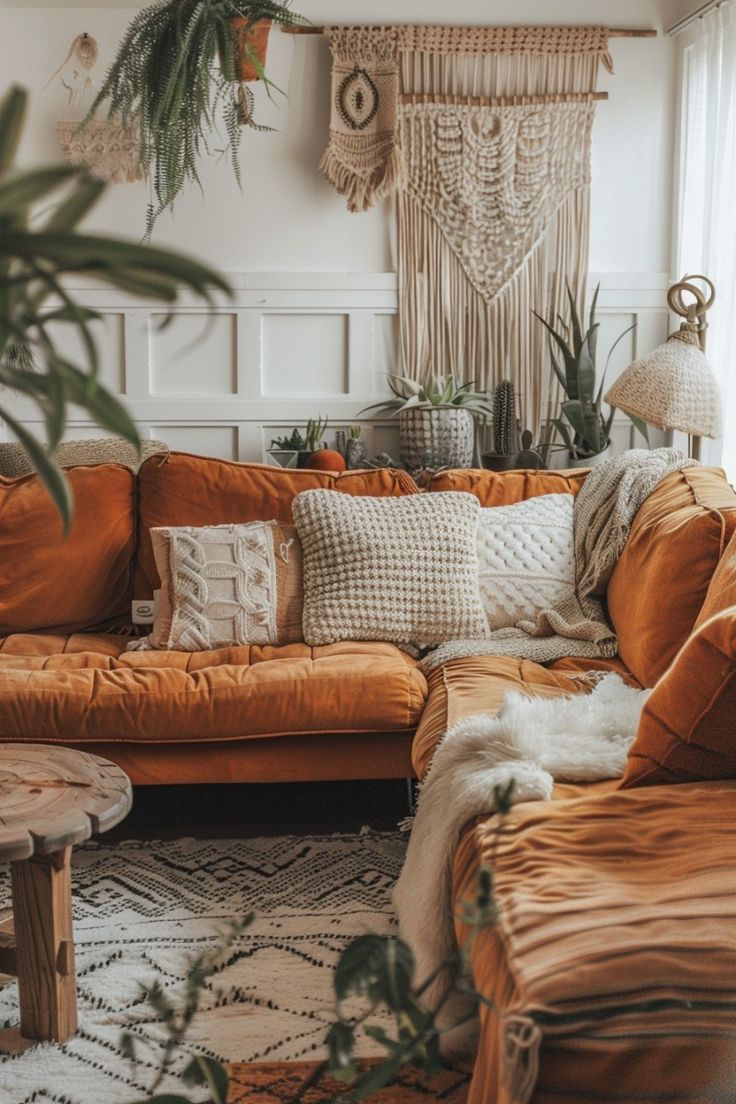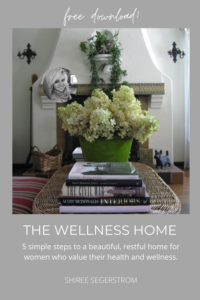Relocating, Repurposing and Refurbishing Your Old Home Furnishings for a Fresh New Look
joy of nesting
Relocating, repurposing and refurbishing old home furnishings is a wonderful, resourceful way to get a fresh new look. There are so many benefits to refreshing your home this way.

It’s about seeing the potential in what you already have, giving it a new lease on life. This approach not only saves money but also helps you keep sentimental items around and enjoy them even more. It helps you avoid the dreaded cookie cutter, Target store look. And keeps you from having to replace everything all at once.
One of the hardest things about buying ‘one off’ pieces of furniture, such as replacing a sofa or entertainment center for instance, is getting everything to coordinate well. It’s what leads to buyers’ remorse and leaves you looking at the albatross for the next 10 years reminding you bought the wrong thing yet again.
And that’s what I love about a good home makeover aka ‘staging’. With a little ingenuity and planning you can refresh, makeover or ‘stage’ your home while making the most of what you have. Then when you do get ready to replace something or buy something new, it will more likely be the right thing.
Here are some great ways to get a new look with the things you have.
Relocating Furniture for a Fresh Perspective
Thinking outside the box, you can find new spots or new finishes for old items that might otherwise be discarded. This approach not only breathes new life into old pieces but also adds a unique touch to your home.
Location can make a significant difference in how a piece of furniture impacts your space. Sometimes, all it takes is moving a piece to a different room or area to breathe new life into it. This simple change can completely transform the functionality and aesthetic of your home.
Your wood pieces are especially wonderful for relocating and repurposing.
A small dresser can be a nightstand. A small etagere can be an end table. A tall end table or ‘tea’ table can in some cases be used as a table in front of the sofa, in lieu of a cocktail table. A breakfront or hutch from the dining room can be a beautiful piece in the entry. A hat rack normally used in the entry can be pressed into service in the dining room. A flat-topped trunk makes an unusual cocktail table.
Updating the Finish
Updating the finish of your furniture can also work wonders.
A fresh coat of paint can transform a tired, outdated piece into a modern statement. Chalk paint, for example, is excellent for achieving a matte, vintage look, while milk paint can give a rustic, distressed finish.
Updating the finish on old furniture is a fantastic way to breathe new life into pieces that may have seen better days. Whether it’s a family heirloom or a thrift store find, a fresh finish can transform it into a standout piece in your home.
In one of my own homes, I had a professional decorative painter put a rich brown glaze on an antique oak table that had turned orange over the years. And the oak ladderback chairs took on new life with a beautiful custom gray green antiqued paint. She also transformed an old hutch with gray green antiqued paint and gave it a completely new look.
Choosing the Right Paint
A fresh coat of paint can completely change the look and feel of a piece. Chalk paint is a great option for beginners because it requires minimal prep work and can create a beautiful, matte finish. For a more durable finish, consider using milk paint, which can give a rustic, distressed look.
When I had my dining room table, chairs and hutch painted and glazed, I went to Pinterest to find the exact colors I was looking for. Seeing what you want and using a pro makes all the difference when refurbishing old pieces.
Reupholstering and Slipcovers for a New Look
Another effective way to update furniture is by reupholstering. This can be particularly transformative for chairs, sofas, and ottomans.
Choose a fabric that complements your current color scheme and adds a touch of comfort. Reupholstering can be a bit more involved than painting, but the results are worth the effort. Hire a professional to ensure high-quality work.
Choosing the Right Fabric
Selecting the right fabric for your upholstery and slipcovers is crucial for both aesthetics, longevity and function. The right choice can enhance the look of your furniture and ensure it stands up to daily wear and tear.
Here’s a guide to help you make the best decision for your piece.
Upholstery Fabric
When choosing upholstery fabric, consider durability, style, and maintenance. Upholstered furniture often sees a lot of use, so the fabric needs to be robust and easy to clean. Upholstery fabric is considerably more expensive than lightweight fabrics used in slipcovers.
To ensure you’re getting a fabric suitable for upholstery make sure the fabric has been tested.
Durability
For high-traffic areas, opt for tightly woven fabrics like canvas, denim, or microfiber. These materials are known for their strength and resistance to wear. If you have pets or children, look for fabrics that are stain-resistant and easy to clean.
For homes with kids and/or pets I like to do a sofa with a subtle floral or leafy print. If I do a print on the sofa, I’ll do a solid on the chairs and vice versa.
Slipcover Fabric
Slipcovers offer a versatile and practical solution for protecting your furniture while allowing you to change its look easily. When choosing fabric for slipcovers, use light weight fabrics like cotton and linen. I like to use prints on my slipcovers.
Staining Wood Furniture
If you prefer a more natural look, consider staining the wood. Staining can enhance the grain and give the piece a rich, classic finish. Start by sanding the piece to remove the old finish and smooth out any imperfections. I also love a glaze like I had done to my dining room table.
Glazes don’t require stripping the furniture. The glaze sits on top of the underlying finish and forms an almost ‘paint’ like surface that’s transparent and shows the grain of the wood. It’s kind of like a clear, thin paint but without coverage.
History, Preservation and Connection
Updating the finish on old furniture is not just about aesthetics; it’s also about preserving and honoring the history of the piece. And if the piece is an heirloom, you’ll enjoy its meaning and connection to your family or ancestors.
By giving it a new look, you can continue to enjoy it for years to come. So, take a look around your home and see which pieces could benefit from a little TLC. With some creativity and effort, you can have old furniture transformed into something truly special.
Refreshing with New Hardware
Hardware updates are a quick and effective way to refresh furniture. Swapping out old knobs and handles for new ones can instantly improve the look of a piece. Consider using unique or vintage hardware to add a personal touch. Small changes like these can make a bigger difference than you might realize.
Sometimes, all a piece needs is a hardware update. This is a quick and cost-effective way to refresh furniture without a complete overhaul.
Sentimental Value and Connection
Repurposing is especially meaningful when it comes to pieces with sentimental value. Instead of letting your old antiques and vintage pieces gather dust, give them a new purpose and a fresh look. By doing so, you honor their history while making them a beautiful, functional part of your home.
In the end, the art of repurposing is about creativity, sustainability, and emotional connection. It’s a way to keep the stories and memories alive while adapting to your current needs and style. So, take a look around your home and see what you can repurpose.
With a bit of imagination and effort, you can create a space that is both beautiful and meaningful.
Download Your Free Gift
To get started on a home where you feel healthy, happy and connected grab my complimentary design and wellness download, The Wellness Home.
It’s the prettiest little book. It’s a quick read with super easy design solutions that help you lead a beautiful, healthier lifestyle at home, plus my 3-to-5 Things Framework that gives you step by step actions to get started and stay on track.
That’s it for today. Thank you for stopping by!
Shiree’
What is Wellness Design? Learn more about the connection between your wellbeing and your home, featured on Deirdre Fitzpatrick’s Dying to Ask Podcast. And if you’d like to dive deeper into this topic, check out my blog post, “Hiring an Interior Designer”.
September 18, 2024
What's Popular
READERS' FAVORITES
Relocating, Repurposing and Refurbishing Your Old Home Furnishings for a Fresh New Look

Relocating, Repurposing and Refurbishing Your Old Home Furnishings for a Fresh New Look

Relocating, Repurposing and Refurbishing Your Old Home Furnishings for a Fresh New Look

